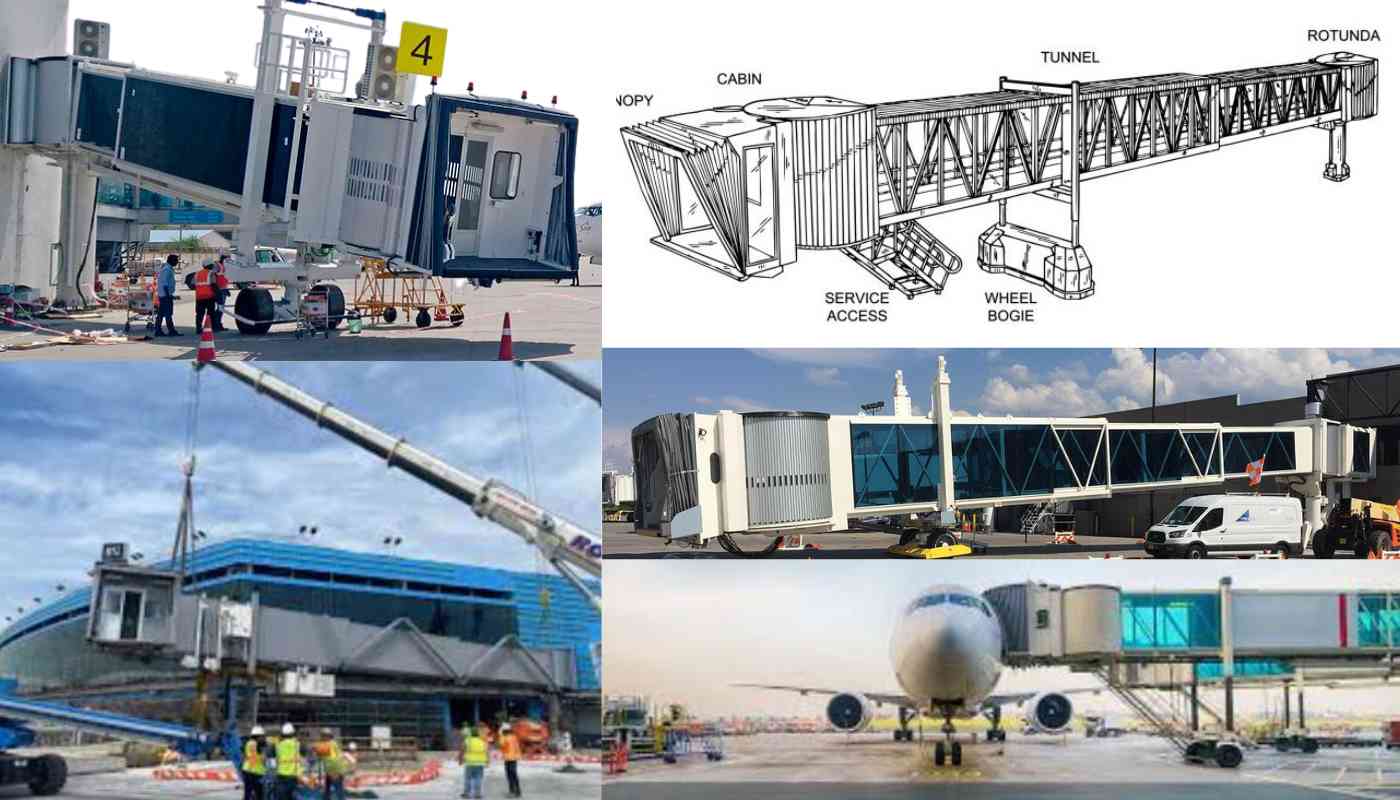Airport Passenger Boarding Bridges in Italy in 2024
Welcome to our comprehensive guide on Passenger Boarding Bridges (PBBs) in Italy! In this article, we’ll delve into the vibrant landscape of airbridge manufacturers in Italy, the latest passenger boarding bridge technology, and the future of air travel in this beautiful country.
Italy, renowned for its rich cultural heritage and exquisite cuisine, is also a hub for innovation in the aviation industry. As one of the leading contributors to the European aviation sector, Italy boasts a robust network of airports equipped with state-of-the-art facilities, including advanced passenger boarding bridges.

The Rise of Passenger Boarding Bridge Manufacturers in Italy
Italy is home to several prominent aircraft boarding bridge suppliers and passenger bridge producers. These manufacturers specialize in designing and manufacturing cutting-edge PBBs tailored to the unique requirements of modern airports.
Among the notable boarding bridge manufacturers in Italy are companies like Aviogei and Langa Industrial. These industry leaders have earned a stellar reputation for their commitment to quality, innovation, and reliability. With a focus on sustainability and efficiency, Italian manufacturers are at the forefront of developing eco-friendly and energy-efficient passenger boarding bridges.
Innovations Shaping the Future
In 2024, the aviation industry is witnessing a paradigm shift in passenger boarding bridge technology. From automated PBBs to triple-tunnel designs, advancements are revolutionizing the boarding experience for travelers.
Automated PBBs, equipped with advanced sensor systems and intelligent controls, streamline the boarding process, enhancing efficiency and reducing turnaround times. These innovative bridges offer seamless integration with airport terminal systems, optimizing the flow of passengers and aircraft operations.
Meanwhile, triple-tunnel PBBs represent the pinnacle of engineering excellence, providing unparalleled flexibility and accessibility. With multiple tunnels catering to different aircraft types and configurations, these versatile bridges accommodate a wide range of boarding scenarios, from narrow-body jets to wide-body giants.
Sustainable Solutions for a Greener Future
In an era of increasing environmental awareness, sustainability has become a cornerstone of aviation infrastructure development. Italian manufacturers are leading the charge towards sustainable passenger boarding bridges that minimize energy consumption and carbon footprint.
By leveraging renewable energy sources and implementing innovative design principles, such as lightweight materials and efficient lighting systems, these eco-friendly PBBs contribute to reducing emissions and promoting environmental stewardship.
Trends and Outlook
As we look ahead to the future of air travel in Italy, several key trends are poised to shape the industry landscape. From advancements in biometric boarding systems to the evolution of airport terminal design, innovation remains the driving force behind progress.
Biometric boarding systems, integrated seamlessly with passenger boarding bridges, offer enhanced security and convenience, allowing travelers to board flights swiftly and securely. By leveraging biometric data such as facial recognition or iris scans, these systems streamline the authentication process, eliminating the need for traditional boarding passes and IDs.
Moreover, airport terminal design continues to evolve to meet the evolving needs of passengers and airlines. Italian architects and designers are pioneering innovative approaches to terminal layout, focusing on maximizing space utilization, improving passenger flow, and enhancing overall user experience.
Regulations for PBBs in Italy
Safety is paramount in the aviation industry, and passenger boarding bridges are subject to stringent regulations and standards to ensure the well-being of travelers and crew members. In Italy, regulatory authorities such as the Italian Civil Aviation Authority (ENAC) oversee compliance with safety regulations for PBBs, including structural integrity, operational reliability, and emergency procedures.
Manufacturers and operators alike are committed to upholding the highest standards of safety and reliability, conducting regular maintenance, inspections, and training programs to mitigate risks and ensure compliance with regulatory requirements.
Navigating the Future of Passenger Boarding Bridges in Italy
In conclusion, the journey through Italy’s aviation industry is one of innovation, sustainability, and excellence. With a diverse array of passenger boarding bridge manufacturers, cutting-edge boarding bridge technology, and a steadfast commitment to safety and sustainability, Italy stands poised to shape the future of air travel for years to come.
As we embark on this exciting journey, let us embrace the spirit of innovation and collaboration, working together to create a future where travel is not only efficient and convenient but also environmentally responsible and safe. Join us as we explore the boundless possibilities of passenger boarding bridges in Italy and beyond. Grazie mille for joining us on this adventure!
FAQs
What is a Passenger Boarding Bridge?
A Passenger Boarding Bridge (PBB) is a movable, enclosed bridge that connects airport terminals to aircraft, allowing passengers to board and disembark safely without exposure to the elements.
How are Passenger Boarding Bridges in Italy powered?
Passenger Boarding Bridges in Italy are often powered by electricity, utilizing energy-efficient systems to minimize environmental impact and reduce operational costs.
Are Passenger Boarding Bridges accessible to passengers with disabilities?
Yes, Passenger Boarding Bridges in Italy prioritize accessibility, featuring ramps, elevators, and other accommodations to ensure all passengers, including those with disabilities, can comfortably board and disembark from aircraft.